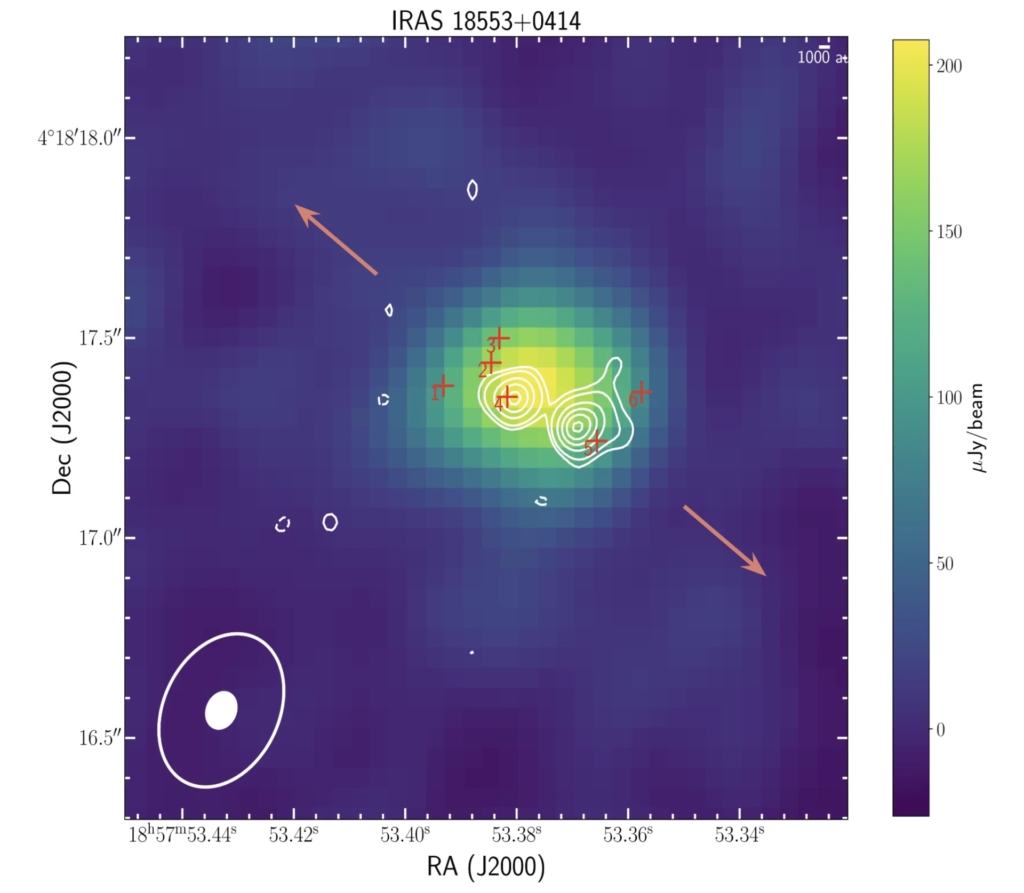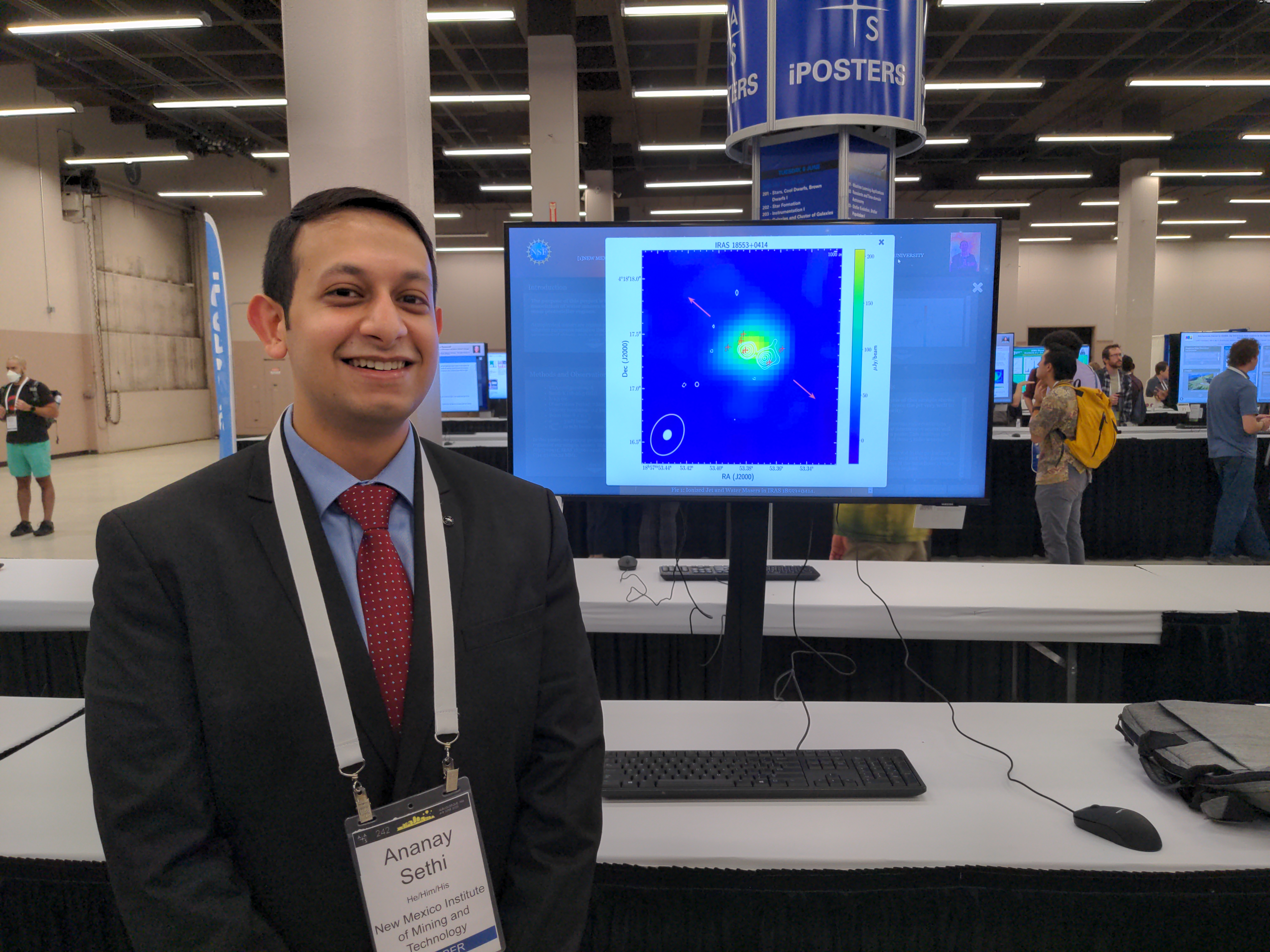Astrophysical masers are microwave lasers that occur naturally in space. They are found in regions of gas that have been heated or compressed by shock waves. Because of this, astrophysical masers are often found in molecular clouds near forming stars, where protostellar jets can collide with them and created bright beams of microwave light. Because of their intensity, masers are a powerful tool for probing regions of gas where shockwaves occur.

Ionized jet and water masers in IRAS 18553+0414. Credit: Ananay Sethi.
Ananay Sethi, a graduate student at New Mexico Tech, has studied masers near high-mass protostars to better understand their formation process. To do this, Ananay used data gathered by the Very Large Array (VLA) in the A configuration using the K-band, which has a wavelength of around 1.3cm. He wanted to see if maser emissions could be used to trace the alignment of jets from high-mass protostars. The observations of maser light from water molecules confirmed that they were caused by ionized jets. Ananay’s preliminary results also showed that the masers gave good outlines of the molecular outflows from high-mass protostar jets, suggesting they can be used to trace the flow of these jets.
Ananay presented these results at AAS242.






